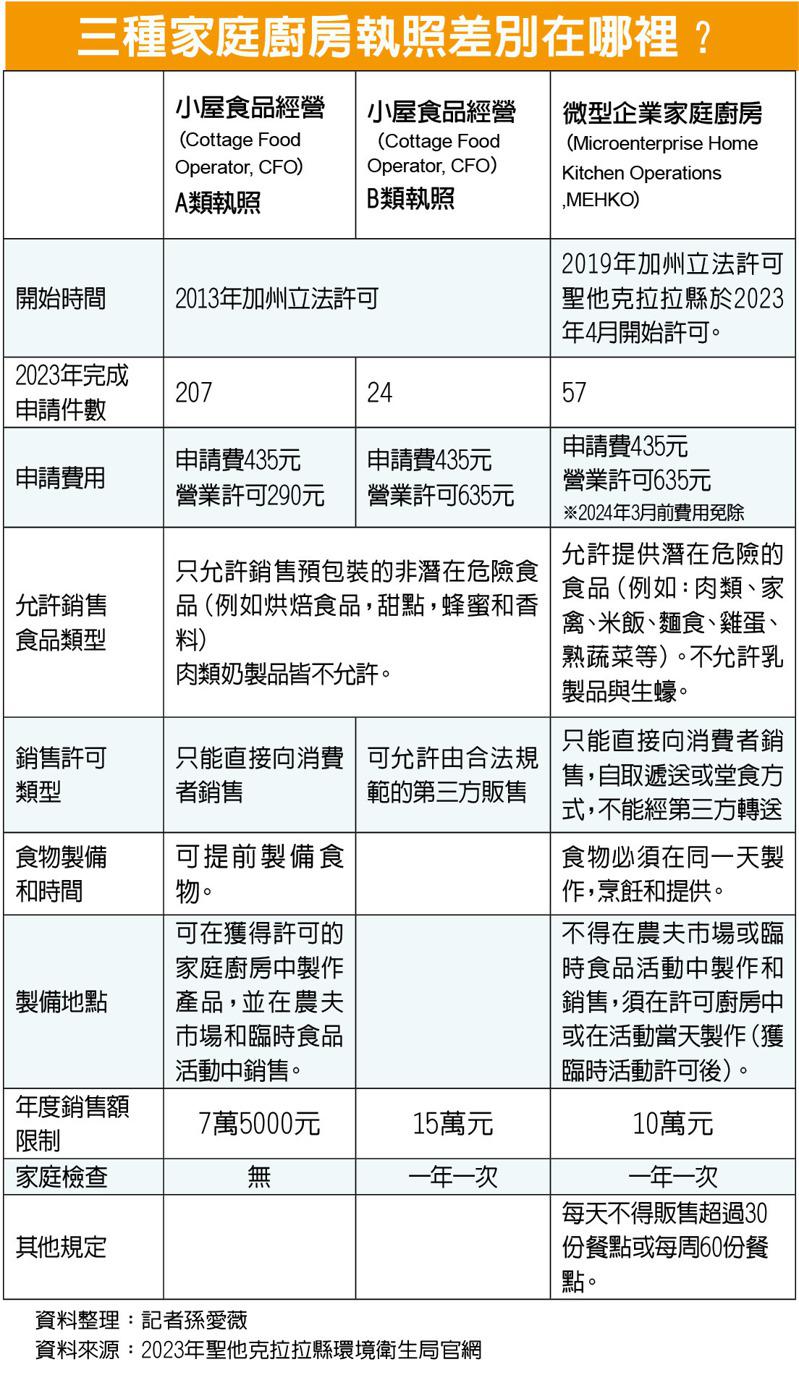 Since California opened up the Cottage Food Operator (CFO) licenses A and B in 2013, it has provided a legal pathway for residents to sell food made in their home kitchens. In 2019, the state further introduced Microenterprise Home Kitchen Operations (MEHKO), which allows the legal sale of fresh meat and savory foods. The application approval for these three types of food licenses is delegated to individual counties.
Since California opened up the Cottage Food Operator (CFO) licenses A and B in 2013, it has provided a legal pathway for residents to sell food made in their home kitchens. In 2019, the state further introduced Microenterprise Home Kitchen Operations (MEHKO), which allows the legal sale of fresh meat and savory foods. The application approval for these three types of food licenses is delegated to individual counties.
Santa Clara County’s Department of Environmental Health (DEH) has a long history of offering the A and B Cottage Food licenses, making it one of the most popular choices for home food businesses. In 2023 alone, the county approved a staggering 231 applications for these licenses, while the newly available micro kitchens, which opened in April 2023, only received 57 applications within the same year.
 In interviews with Cottage Food Operators, it seems that there is little interest in switching to the micro kitchen license. This reluctance stems from the fact that many of the original cottage food items fall under low-risk categories, such as baked goods that do not include fresh dairy or meat. Transitioning to a micro kitchen would allow for meat dishes but would require a shift in both sales channels and the volume of meals sold daily.
In interviews with Cottage Food Operators, it seems that there is little interest in switching to the micro kitchen license. This reluctance stems from the fact that many of the original cottage food items fall under low-risk categories, such as baked goods that do not include fresh dairy or meat. Transitioning to a micro kitchen would allow for meat dishes but would require a shift in both sales channels and the volume of meals sold daily.
The introduction of micro kitchens is primarily aimed at individuals looking to sell meal types like bento boxes, which now can include ingredients like meat, eggs, and vegetables that were previously prohibited. Additionally, the regulations for cooking methods are more relaxed, allowing customers to dine on-site at the home restaurant.
When the micro kitchen licenses were initially rolled out, there was a restriction that annual sales couldn’t exceed $58,275. This figure is still referenced in DEH presentations, although the official website now states a cap of $100,000.
One business owner who applied for a Cottage Food Operator license type A shared that they initially explored the micro kitchen option. Upon discovering the $58,275 sales limit, they realized it was lower than their current A license allowance and decided against making the switch unless they intended to sell savory dishes.
While the new micro kitchen license does come with various limitations, such as a cap of 30 meals sold per day, each meal can consist of multiple components—appetizers, main courses, and desserts—allowing for a diverse product offering within a single sale.
California’s legislative framework for Cottage Food Operations and micro kitchens has been passed down to county governments for modification and implementation. The food permitting regulations can vary from county to county and may even change from year to year, so it’s essential for applicants to consult with their local health departments for the most accurate application details and requirements.